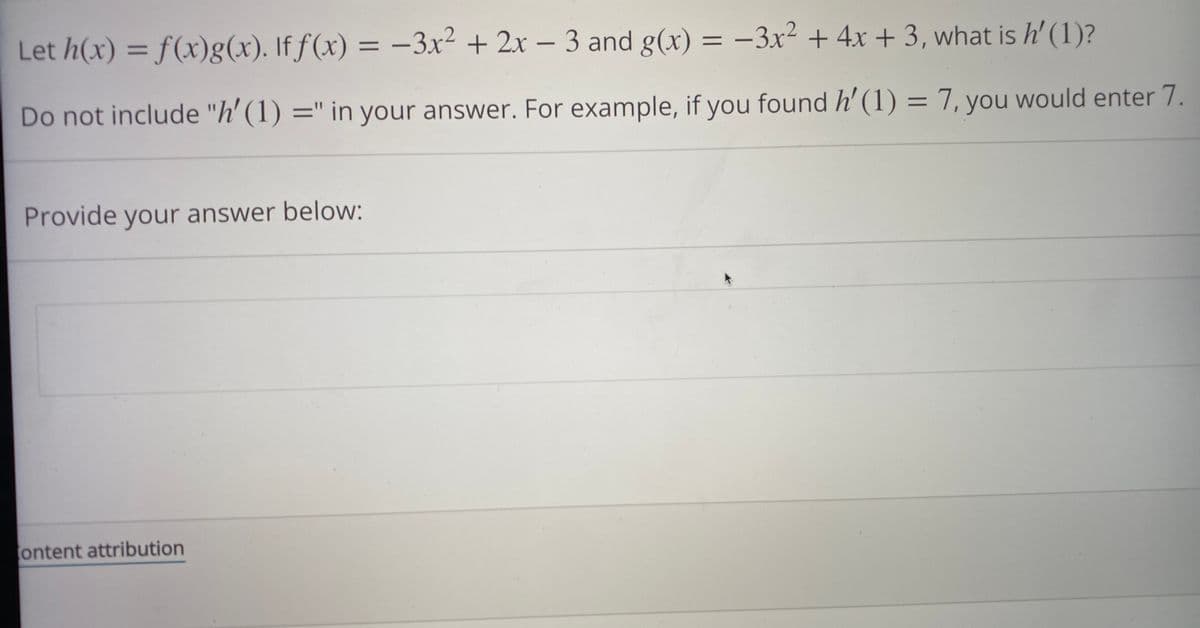Let h(x) = f(x)g(x). If f(x) = –3x² + 2x – 3 and g(x) = –3x² + 4x + 3, what is h' (1)? Do not include "h' (1) =" in your answer. For example, if you found h' (1) = 7, you would enter 7. Provide your answer below:
Let h(x) = f(x)g(x). If f(x) = –3x² + 2x – 3 and g(x) = –3x² + 4x + 3, what is h' (1)? Do not include "h' (1) =" in your answer. For example, if you found h' (1) = 7, you would enter 7. Provide your answer below:
Algebra & Trigonometry with Analytic Geometry
13th Edition
ISBN:9781133382119
Author:Swokowski
Publisher:Swokowski
Chapter4: Polynomial And Rational Functions
Section: Chapter Questions
Problem 5T
Related questions
Question

Transcribed Image Text:Let h(x) = f(x)g(x). If f(x) = -3x² + 2x – 3 and g(x) = -3x² + 4x + 3, what is h' (1)?
%3D
%3D
Do not include "h' (1) =" in your answer. For example, if you found h' (1) = 7, you would enter 7.
Provide your answer below:
ontent attribution
Expert Solution
This question has been solved!
Explore an expertly crafted, step-by-step solution for a thorough understanding of key concepts.
Step by step
Solved in 2 steps with 2 images

Recommended textbooks for you

Algebra & Trigonometry with Analytic Geometry
Algebra
ISBN:
9781133382119
Author:
Swokowski
Publisher:
Cengage

Algebra & Trigonometry with Analytic Geometry
Algebra
ISBN:
9781133382119
Author:
Swokowski
Publisher:
Cengage